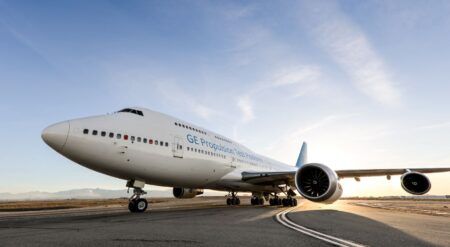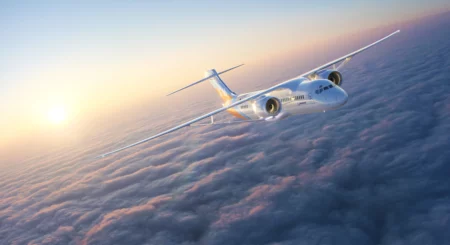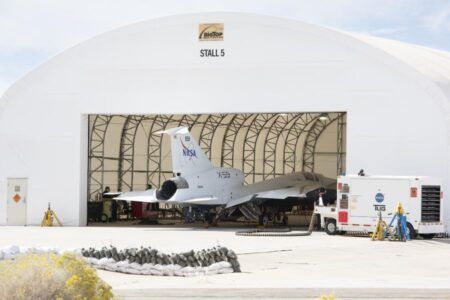The demonstrator aircraft for the BLADE (Breakthrough Laminar Aircraft Demonstrator in Europe) research program is now ready for flight testing.
An Airbus A340 former flight test aircraft (MSN001) has been transformed with new laminar flow wing sections outboard of the outer engines. These are angled 20° higher than the inner wings and the outer ends have a bullet-shaped pod instead of winglets.
Airbus Research and Technology and its partners believe the benefits of the program could help airlines reduce fuel consumption by up to 5%. The potential drag reduction could reach 8% on short-range aircraft when compared to normal ‘turbulent’ wings. The benefits would occur at optimal speeds of Mach 0.75, slightly below current average cruising velocities at Mach 0.78.
The A340 has two different outer wing sections, so Saab/Aeronova and GKN can test two manufacturing ideas. The left wing by Saab (Sweden) and Aeronova (Romania) has one panel covering over 50% of the laminar wing section to improve laminar flow. GKN (UK) made the right-wing section as several panels. The leading-edge joint (solid in the Saab model) has been carefully assembled and polished to improve the laminar flow.
Simultaneously testing the wings on the aircraft will allow researchers to measure how much the concept benefits from the laminar flow. If the difference between the two is small, the GKN-made concept will be more cost effective to manufacture, the engineers explained.
The project will cost about €180m (US$216m), and Airbus has invested €90m (US$108m).
September 14, 2017




